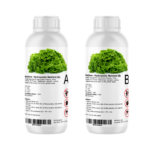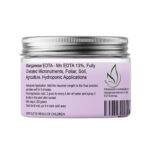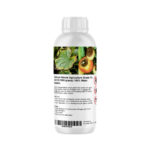
Crop Selection in Hydroponics – Challenges and Solutions
Crop Selection in Hydroponics: Challenges & Best Solutions
Introduction
Crop selection in hydroponics is a crucial factor in achieving high yields and reducing challenges. Not all crops thrive in soilless systems, making the right choice essential for success. From leafy greens to fruiting plants, selecting the best crops involves balancing plant requirements, system capabilities, and market demand.
In this post, we’ll explore the challenges of crop selection in hydroponics, key factors to consider, and practical solutions to help you make the best choices for your hydroponic system.
Why Crop Selection in Hydroponics is Challenging
While hydroponics offers flexibility, not all crops thrive in these systems. Here’s why choosing the right crops can be difficult:
1. System Compatibility
Different hydroponic systems are suited for specific crops. For example:
- NFT (Nutrient Film Technique): Best for leafy greens like lettuce and spinach.
- DWC (Deep Water Culture): Works well for larger plants like tomatoes and cucumbers.
- Drip Systems: Ideal for fruiting plants such as peppers and strawberries.
2. Growth Requirements
Some crops need specific light, temperature, and nutrient levels, which may be difficult to maintain in certain hydroponic setups.
- Leafy greens prefer moderate light and cooler temperatures.
- Fruiting plants need high light intensity and warmer conditions.
3. Space Constraints
- Large plants, like vining crops or fruit trees, may not be practical for small-scale or indoor hydroponic systems.
4. Market Demand & Profitability
- Growing crops without market demand can lead to financial losses.
- Oversupplied crops result in low selling prices and wasted resources.
What Happens If You Choose the Wrong Crops?
Poor crop selection can lead to several problems, including:
- Low Yields: Crops may grow slowly or produce fewer harvests.
- Increased Costs: High-maintenance crops require more nutrients, light, and energy.
- System Strain: Large or heavy plants can damage equipment or increase maintenance costs.
- Wasted Resources: If the crops don’t sell well, time, effort, and money are wasted.
Best Solutions for Choosing Hydroponic Crops
To choose the best crops for your hydroponic system, consider these key strategies:
1. Match Crops to Your Hydroponic System
- Leafy Greens (Lettuce, Spinach, Kale): Ideal for NFT or vertical systems.
- Herbs (Basil, Mint, Cilantro): Grow well in small-scale systems like Kratky or DWC.
- Fruiting Plants (Tomatoes, Peppers, Cucumbers): Require larger setups like DWC or drip irrigation.
2. Consider Growth Requirements
- Choose crops that match your system’s light, temperature, and nutrient capabilities.
- Start with easy-to-grow plants like lettuce, basil, or microgreens if you’re a beginner.
3. Focus on High-Value Crops
- Grow profitable crops like specialty herbs, gourmet greens, and exotic fruits to maximize income.
4. Plan for Succession Planting
- Rotate fast-growing leafy greens with slower-growing fruiting plants to increase production.
5. Experiment with Different Varieties
- Some crop varieties perform better in hydroponics than others. Try different strains of tomatoes, peppers, or strawberries to find the best ones for your setup.
6. Research Market Demand
- Connect with restaurants, grocery stores, and farmers’ markets to find out which crops are in demand.
7. Optimize Space Usage
- Use vertical farming or compact crops to maximize small spaces.
Advanced Tips for Experienced Growers
For experienced hydroponic farmers, consider these pro strategies:
1. Try Hydroponic Aquaponics
- Combine hydroponics with aquaculture (raising fish) to create a sustainable system.
- Grow lettuce, herbs, and fruiting plants while producing fresh fish for extra profit.
2. Focus on Specialty Crops
- Grow niche crops like microgreens, edible flowers, or medicinal herbs for high-end markets.
3. Rotate Crops to Maintain Nutrient Balance
- Switching between different crops can prevent nutrient depletion and reduce pests and diseases.
4. Use Hybrid Systems
- Combine multiple hydroponic techniques (e.g., NFT + DWC) to grow a wider variety of crops.
Conclusion
Choosing the right crops for hydroponic farming is key to success. By matching crops to your system, considering growth requirements, and focusing on market demand, you can maximize yields and ensure profitability.
Remember, the key to successful crop selection is experimentation and adaptation. Start with easy crops, learn from your experiences, and expand into more profitable and complex crops over time.




